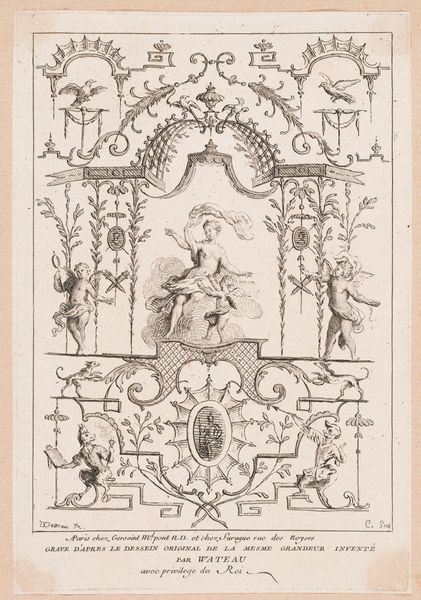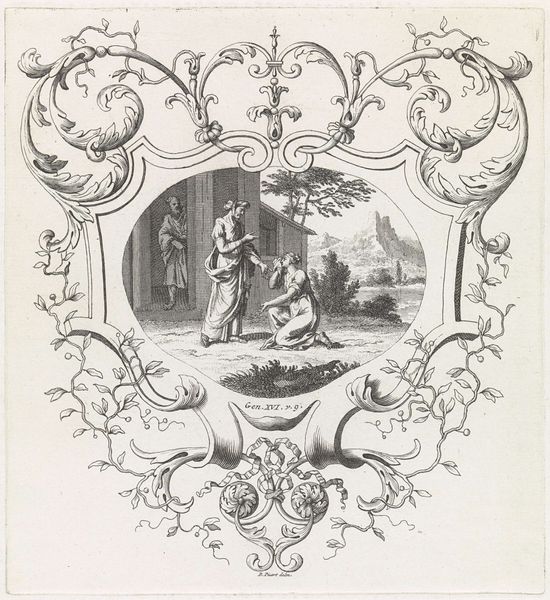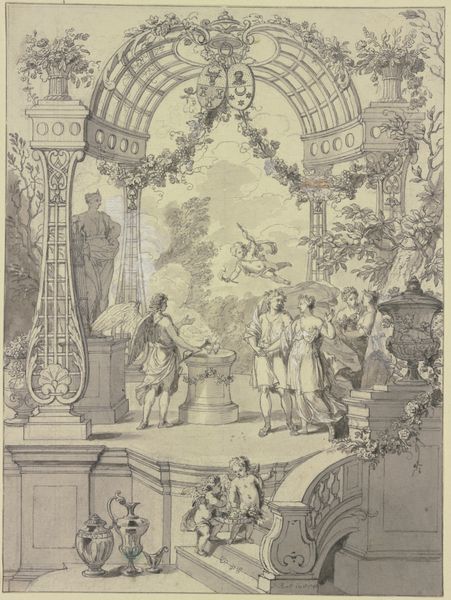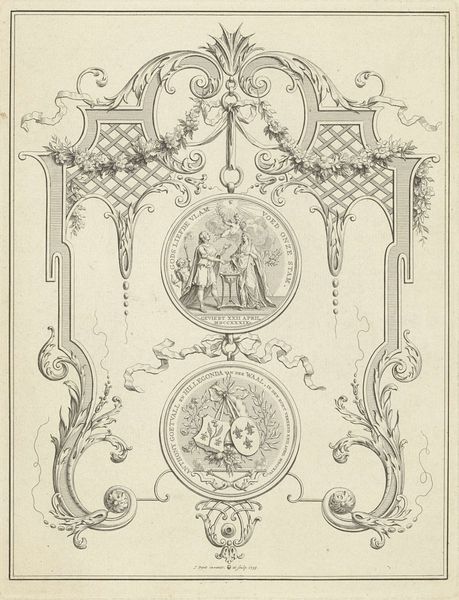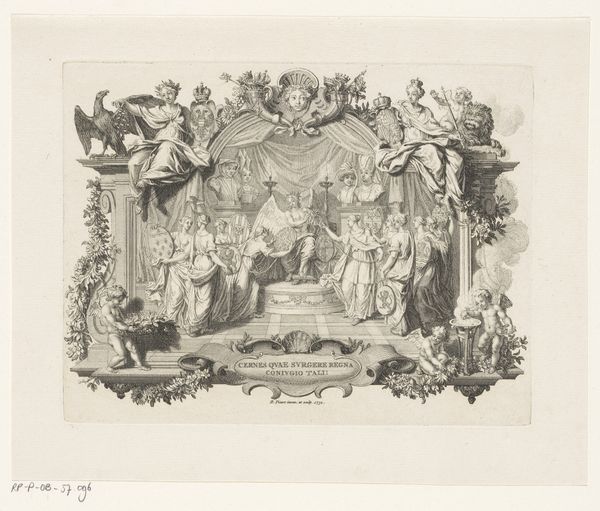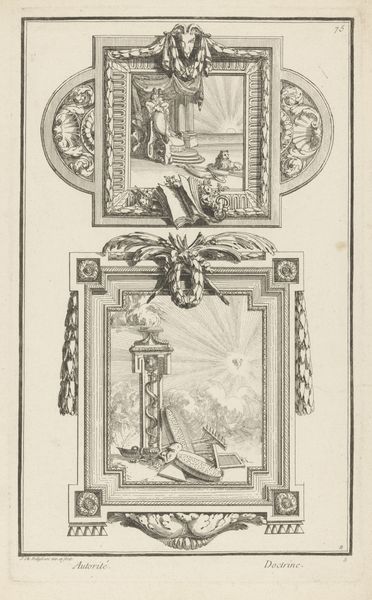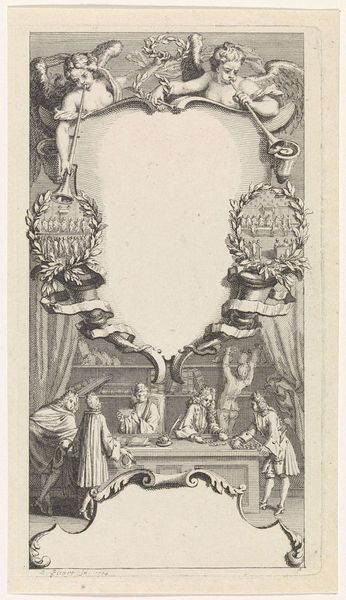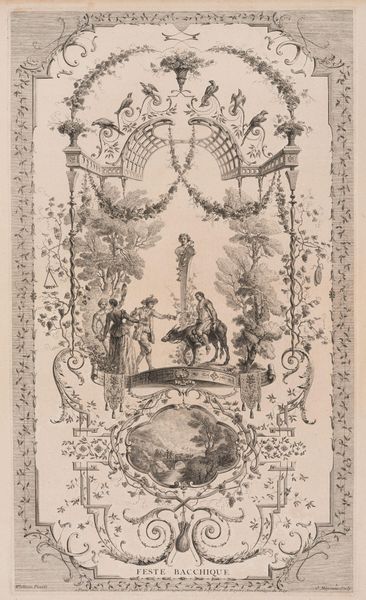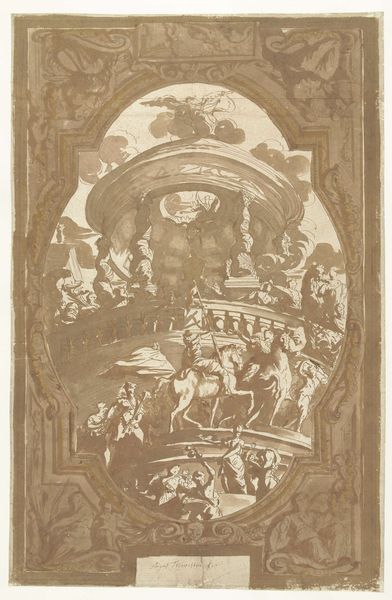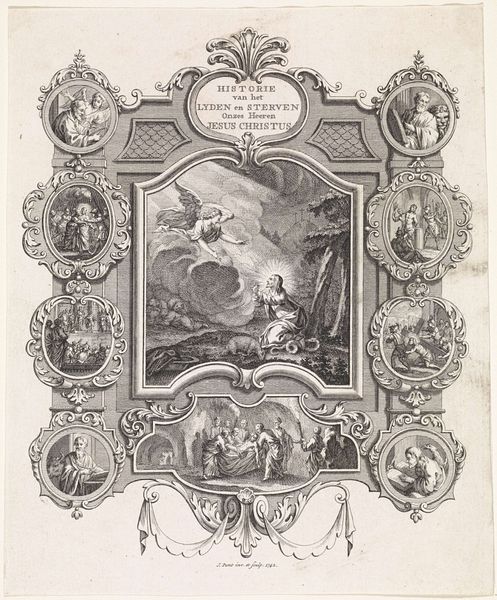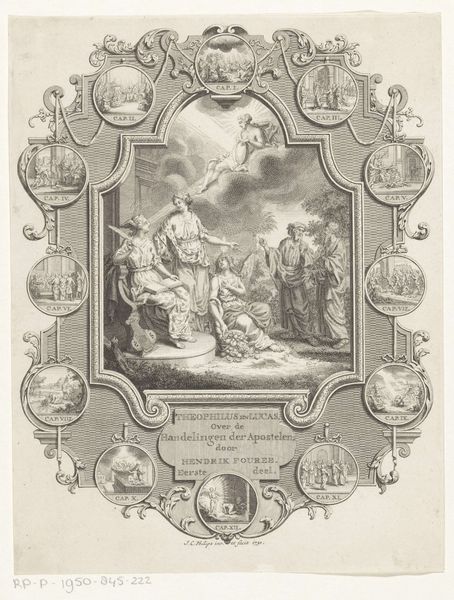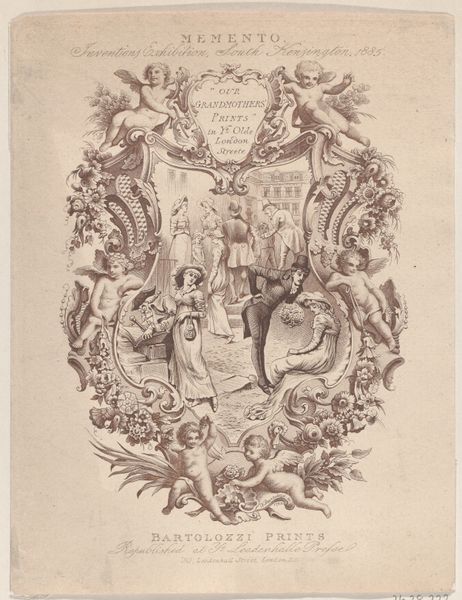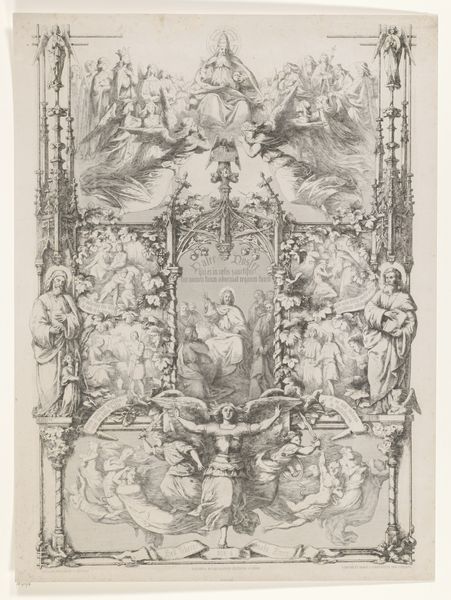
Allegorische voorstelling ter gelegenheid van het huwelijk van Arnout van Citters en Sara Jacoba Ockerse 1737
0:00
0:00
etching, engraving
#
portrait
#
allegory
#
baroque
#
etching
#
old engraving style
#
etching
#
history-painting
#
engraving
Dimensions: height 241 mm, width 196 mm
Copyright: Rijks Museum: Open Domain
Editor: So, this etching by Jan Punt, from 1737, is titled "Allegorical Representation on the Occasion of the Marriage of Arnout van Citters and Sara Jacoba Ockerse." It strikes me as quite theatrical, almost like a stage design. What do you see in this piece, considering its material production and social context? Curator: The piece presents itself as high art through allegory, but I think its power lies in considering the materiality of printmaking in the 18th century. Etchings like this were essentially mass-produced imagery, a means of disseminating information and celebrating events for a broader audience. Look closely; can we ignore the economic drivers behind its creation, considering the labour that went into it and its place in celebrating elite marriages? Editor: I see your point about accessibility through print. But what about the allegorical figures and symbolism? Does the emphasis on the materials and production devalue those traditional artistic elements? Curator: Not at all! The allegorical elements were part of the visual language understood by the consumer. The material conditions– the very *possibility* of distributing the image– informed the message. The etching allowed this symbolic language, associated with the elite, to circulate more widely. Did it change how the population understood that symbolism by changing who consumed it, for example? The making, reproduction, and selling all played roles. Editor: So, you are saying that focusing on the material process opens up new questions about consumption, the art market, and even class dynamics during that time? Curator: Precisely! And it challenges our assumptions about the hierarchy of art forms. This isn't "just" an etching; it’s a document reflecting production, labor, and a very specific socio-economic reality. How does understanding the technical skill, along with the etching's purpose, influence our understanding of art from this era? Editor: I never thought of it that way. Seeing it as more than just an image but as an artifact of its time shifts my entire perspective. Thanks. Curator: Absolutely. By understanding the material reality of its production and dissemination, we gain a deeper insight into its social and cultural function.
Comments
No comments
Be the first to comment and join the conversation on the ultimate creative platform.
